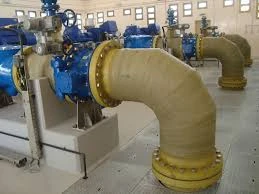
-
 Afrikaans
Afrikaans -
 Albanian
Albanian -
 Amharic
Amharic -
 Arabic
Arabic -
 Armenian
Armenian -
 Azerbaijani
Azerbaijani -
 Basque
Basque -
 Belarusian
Belarusian -
 Bengali
Bengali -
 Bosnian
Bosnian -
 Bulgarian
Bulgarian -
 Catalan
Catalan -
 Cebuano
Cebuano -
 China
China -
 China (Taiwan)
China (Taiwan) -
 Corsican
Corsican -
 Croatian
Croatian -
 Czech
Czech -
 Danish
Danish -
 Dutch
Dutch -
 English
English -
 Esperanto
Esperanto -
 Estonian
Estonian -
 Finnish
Finnish -
 French
French -
 Frisian
Frisian -
 Galician
Galician -
 Georgian
Georgian -
 German
German -
 Greek
Greek -
 Gujarati
Gujarati -
 Haitian Creole
Haitian Creole -
 hausa
hausa -
 hawaiian
hawaiian -
 Hebrew
Hebrew -
 Hindi
Hindi -
 Miao
Miao -
 Hungarian
Hungarian -
 Icelandic
Icelandic -
 igbo
igbo -
 Indonesian
Indonesian -
 irish
irish -
 Italian
Italian -
 Japanese
Japanese -
 Javanese
Javanese -
 Kannada
Kannada -
 kazakh
kazakh -
 Khmer
Khmer -
 Rwandese
Rwandese -
 Korean
Korean -
 Kurdish
Kurdish -
 Kyrgyz
Kyrgyz -
 Lao
Lao -
 Latin
Latin -
 Latvian
Latvian -
 Lithuanian
Lithuanian -
 Luxembourgish
Luxembourgish -
 Macedonian
Macedonian -
 Malgashi
Malgashi -
 Malay
Malay -
 Malayalam
Malayalam -
 Maltese
Maltese -
 Maori
Maori -
 Marathi
Marathi -
 Mongolian
Mongolian -
 Myanmar
Myanmar -
 Nepali
Nepali -
 Norwegian
Norwegian -
 Norwegian
Norwegian -
 Occitan
Occitan -
 Pashto
Pashto -
 Persian
Persian -
 Polish
Polish -
 Portuguese
Portuguese -
 Punjabi
Punjabi -
 Romanian
Romanian -
 Russian
Russian -
 Samoan
Samoan -
 Scottish Gaelic
Scottish Gaelic -
 Serbian
Serbian -
 Sesotho
Sesotho -
 Shona
Shona -
 Sindhi
Sindhi -
 Sinhala
Sinhala -
 Slovak
Slovak -
 Slovenian
Slovenian -
 Somali
Somali -
 Spanish
Spanish -
 Sundanese
Sundanese -
 Swahili
Swahili -
 Swedish
Swedish -
 Tagalog
Tagalog -
 Tajik
Tajik -
 Tamil
Tamil -
 Tatar
Tatar -
 Telugu
Telugu -
 Thai
Thai -
 Turkish
Turkish -
 Turkmen
Turkmen -
 Ukrainian
Ukrainian -
 Urdu
Urdu -
 Uighur
Uighur -
 Uzbek
Uzbek -
 Vietnamese
Vietnamese -
 Welsh
Welsh -
 Bantu
Bantu -
 Yiddish
Yiddish -
 Yoruba
Yoruba -
 Zulu
Zulu
FRP Water Desalination Systems and Components for Enhanced Treatment Efficiency
Efficient Water Treatment Using FRP Desalination Pipes and Fittings
Water scarcity has become a pressing global challenge, prompting the need for innovative solutions to address the increasing demand for fresh water. One such solution is desalination, a process that converts seawater into potable water. The efficiency of desalination plants significantly depends on the materials and technologies used, particularly in the construction of pipes and fittings. Fiberglass Reinforced Plastic (FRP) has emerged as a superior material for these applications, offering numerous advantages that enhance water treatment processes.
Understanding FRP
FRP is a composite material made of a polymer matrix reinforced with fibers, usually glass. This combination results in a lightweight, high-strength, and corrosion-resistant material that is ideal for harsh environments, such as those found in desalination plants. Given the saltwater exposure and high pressures involved in desalination processes, the durability of pipes and fittings is paramount. FRP pipes and fittings withstand these conditions far better than traditional materials such as steel or PVC.
Advantages of FRP in Desalination
1. Corrosion Resistance One of the most significant benefits of FRP is its resistance to corrosion. In a desalination plant, the constant exposure to seawater and chemicals used in the treatment process can lead to rapid degradation of metallic materials. FRP not only resists corrosion but also does not suffer from scaling, thereby maintaining smooth internal surfaces and improving flow efficiency.
2. Lightweight FRP is considerably lighter than metal alternatives, making installation and maintenance easier and more cost-effective. The reduced weight allows for lower transportation costs and simpler handling during installation, which is especially beneficial for remote or offshore desalination facilities.
3. Flexibility and Customization FRP pipes and fittings can be manufactured in various diameters, lengths, and shapes, allowing for customized solutions tailored to specific project requirements. This flexibility also aids in adapting to varying hydraulic conditions and layouts within desalination plants.
frp desalination pipes and fittings for efficient water treatment ...

5. Reduced Lifecycle Costs The upfront costs of FRP may be higher than traditional materials; however, the long-term benefits—including lower maintenance costs, extended lifespan, and reduced energy consumption—often lead to lower overall lifecycle costs.
Implementation in Desalination Plants
The integration of FRP pipes and fittings in desalination systems can significantly enhance operational efficiency. These components can be utilized in various stages of the desalination process, from intake and pre-treatment to reverse osmosis and post-treatment. Further, the use of FRP can help meet environmental regulations, as they are often produced with lower carbon footprints compared to alternative materials.
Moreover, with advancements in technology, manufacturers are developing FRP products that incorporate additional features such as anti-microbial properties, which can further enhance water quality and safety.
Future Prospects
As the global demand for fresh water continues to rise due to population growth and climate change, the desalination market is expected to expand. The use of FRP materials will likely become increasingly prevalent in the construction and retrofitting of desalination facilities. Research and development efforts are also ongoing to enhance the properties of FRP, such as developing hybrid composites that incorporate other materials for improved performance.
Conclusion
In conclusion, FRP desalination pipes and fittings represent a transformative approach to efficient water treatment. Their unique properties not only address the challenges of corrosive environments but also contribute to the sustainability and cost-effectiveness of desalination processes. Moving forward, the adoption of FRP technology will play a critical role in ensuring a reliable supply of fresh water, making it an essential component in the fight against global water scarcity. As the industry evolves, continued innovation in materials and design will further solidify FRP’s position as a key player in the future of water treatment technologies.









